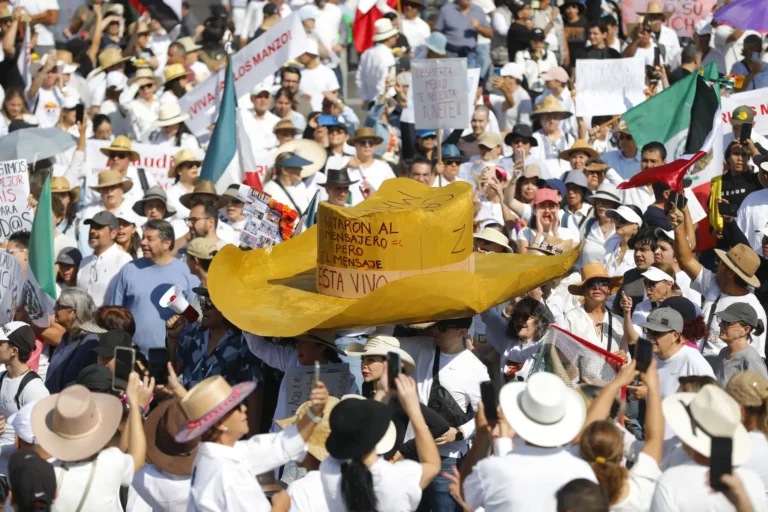LATIN AMERICA
Mexico: another color revolution in Latin America?
Chronicle details what happened during protests against President Claudia Sheinbaum

The article “Mexico, a strange ‘Generation Z’: they’ve gone from white flags to uncontrolled anger”, written by Hermann Bellinghausen for the newspaper La Jornada, offers a detailed and critical account of the mobilizations that have taken place in Mexico, called by the so-called “Generation Z” and the so-called “Sombrero Movement”. The article describes how a march announced as peaceful, marked by religious symbols and white flags, quickly turned into an episode of open violence, political hostility and intense clashes with the police.
The author begins by highlighting a contrast that runs throughout the text: although the population was “very angry”, it is surprising that a march “carrying Guadalupan images and little white flags” was the trigger for attacking “the Metropolitan Cathedral”, which was protected by “a high iron wall”.
The most striking point, according to him, is that the same demonstrators who shouted “we want peace” were celebrating “the violent assault on the Catholic temple and the National Palace”.
During the protests, writes Bellinghausen, “everything was insults”. According to him, the tone was “quite personal”, with “visceral hatred of the president” accompanied by explicit fantasies of humiliation.
Among the shouts recorded by the author, one man, standing next to his wife, shouted: “Let them take her out and leave her naked!”. Another, wearing a “white shirt and a farmer’s hat”, shouted: “inside, their breasts are shaking!”. Women also took part in the moral degradation, mocking the president’s thinness “in a crude way”.
Bellinghausen points out that the march did not seem to be made up of popular organizations. On the contrary, as he writes, they were groups that “didn’t seem to belong to grassroots organizations”. The aesthetics of the act mixed national and religious symbols and even disconnected cultural references: the author mentions that “national flags and a skull with a hat from the anime One Piece” were superimposed, carried by adults who were probably unaware of the image’s origin. This reinforces the chaotic nature of the mobilization.
There was also a lack of coordination even in the costumes: “some in white and others in pure black, as if they hadn’t got the coloring right”.
According to the author, one of the main conveners suggested “taking over the National Palace like in Nepal”, a country where a government palace was set on fire. A few days later, “several groups of young people” tried to put the suggestion into practice, attacking the barriers as soon as the square filled up.
The description of the most violent moments is one of the central points of the text. “Well-organized groups of hooded men” attacked the National Palace barriers using “hammers and sledgehammers”, tearing up cobblestones to throw at the shields. They also removed “heavy manhole covers” and threw “homemade bombs, some very deafening”.
The police, initially behind the “iron wall”, reacted with stones and gas. At one point, the south corner of the palace became “a veritable powder keg”.
The author points out a revealing detail: he saw on a TV screen a news program accusing “repression and provocation against Generation Z” even before the police had begun to disperse the demonstrators.



